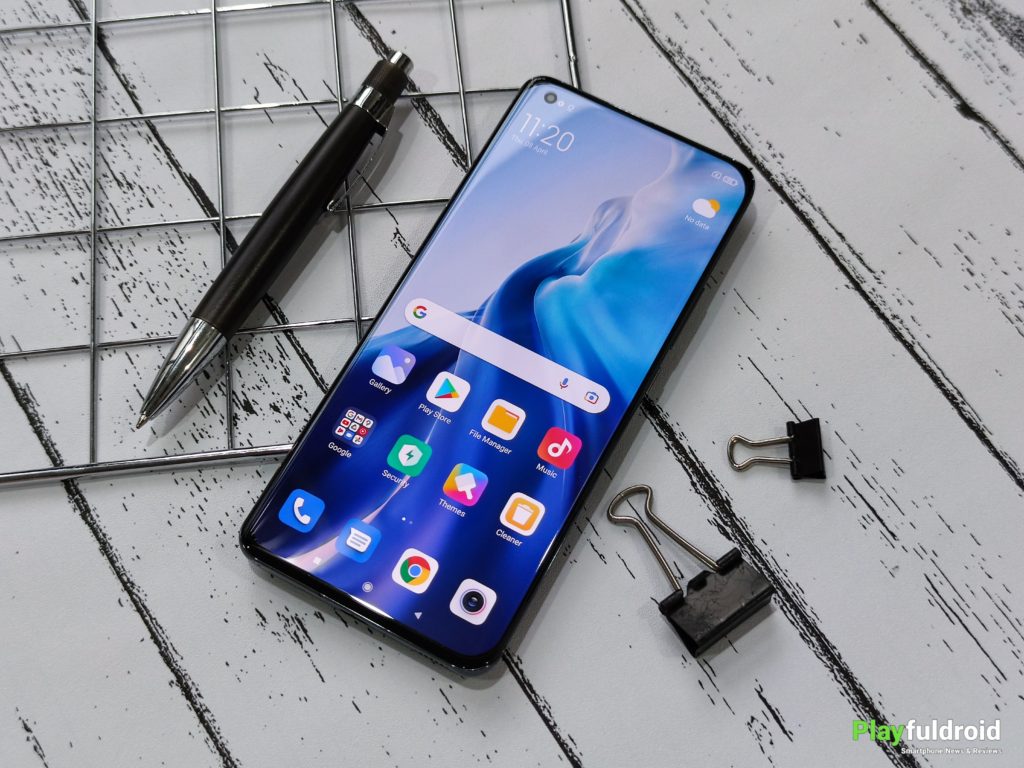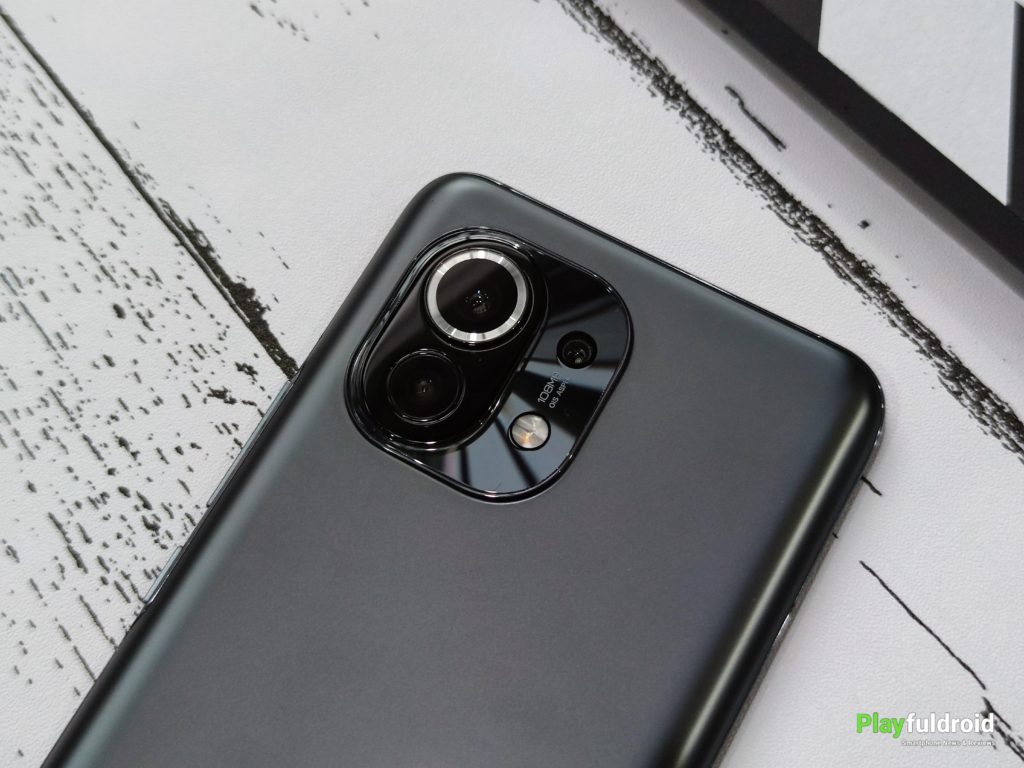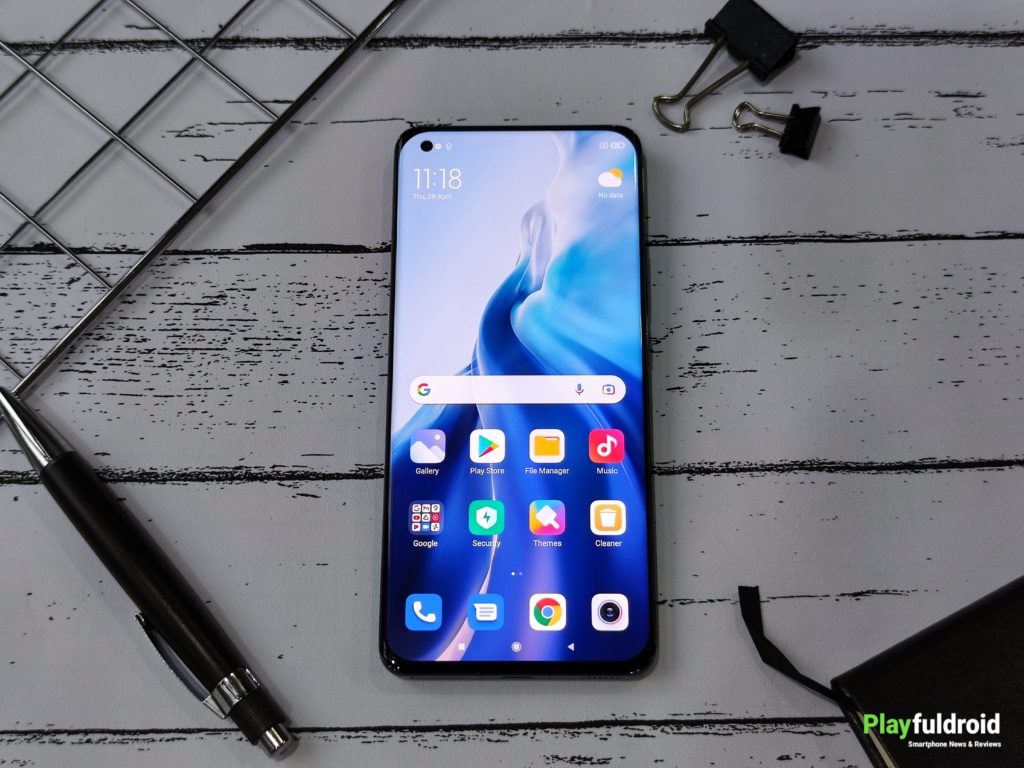During our previous Xiaomi review, we were immensely impressed by how Xiaomi managed to squeeze in all the impressive specs into the Mi 10T Pro (Review) at halve the price of most flagship phones, making it an ultra-value flagship or rather, a flagship killer in the local market.

As such, we really look forward to the brand new Xiaomi Mi 11 when the company launched the phone in Singapore earlier this year, eager to find out where the phone stands among all the recently unveiled flagship phones especially with its sub-S$1,000 price tag.
Judging on its specs sheet alone, the Xiaomi Mi 11 is undeniably a top-tier flagship phone that comes with some of the best smartphone display, class-leading processor, high-res cameras, as well as ultra-fast wired and wireless charging speed.
However, does all these juicy specs pan out in our real world test? Let’s find out in our Xiaomi Mi 11 review!
Design
On the rear side, the Xiaomi Mi 11 is strikingly different from its predecessor and you can easily tell them apart by looking at their rear camera module. That’s because the company had ditched those elongated camera design we saw on the Xiaomi Mi 9 and Mi 10 for a more attractive square-shape camera island.

Interestingly, the camera module also comes with a shiny accent which creates a contrast with the frosted, matte finish of its back panel. Its camera bump is huge, but is still comparatively smaller than what we saw on the Samsung Galaxy S21 Ultra (Review) and Huawei Mate 40 Pro (Review).

Its back panel retains the usual dual-curve design which makes the phone much easier to use with one hand. This is further helped by the fact that the phone is really slim at just 8.1mm which is even thinner than the OPPO Find X3 Pro (Review).

Expectedly, its rear panel backed by the Gorilla Glass 5 not only gives the phone a whole lot of premium feel on hand, but also protects it against accidental drops and scratches which is really important if you’re one of those with butterfingers like me.
For the review unit I’d received, the phone is dressed in Midnight Gray colorway which possesses some form of understated elegance that some might prefer over phones with glossy back. It certainly does a good job in hiding fingerprints and smudges which I really appreciate.
Coming to the front side, the Xiaomi Mi 11 retains the familiar hole-punch, curved display since after all, there isn’t much room for changes upfront other than shifting the selfie camera around or hiding it under the display.

This time round, the Xiaomi Mi 11’s 6.81” front display is slightly larger than least year’s Mi 10 which settled for a 6.67” display. Of course, this isn’t the main feature we want to talk about for its front display, but rather its underlying technologies.
The Xiaomi Mi 11’s AMOLED display is a tremendous upgrade over its predecessor, bringing in an ultra-sharp WQHD+ screen resolution and a buttery-smooth 120Hz refresh rate which put it pretty much on par with other more expensive models like the OPPO Find X3 Pro and Samsung Galaxy S21 Ultra.
The screen looks brilliant with true-to-life color reproduction that allows you to enjoy any contents onscreen be it gaming or video streaming. Above that, it also features an incredible 1,500 nits peak brightness that will ensure the screen remain visible even directly under the sun.
Although its back panel gets a Gorilla Glass 5, its front panel is actually reinforced the latest Gorilla Glass Victus which is way tougher and durable than the former. Last but not the least, you also get a responsive in-display fingerprint scanner that unlocks almost instantaneously.
Performance
Under the hood, the Xiaomi Mi 11 is powered by the latest Snapdragon 888 mobile platform which is currently the most powerful chipset among Android smartphones at the moment. In case you may not know, the Mi 11 is actually the first smartphone in the world to debut with the Snapdragon 888 chipset last year.
This is also the same chip that’s found in some of the recent gaming flagship phones like the Black Shark 4 Pro and ASUS ROG Phone 5, which means you can really brace yourself for some top-tier performance on the Mi 11.
True enough, everything feels seamless on the Xiaomi Mi 11 from its fluid gaming experience to its lag-free multitasking. Even when gaming under the highest graphical settings on PUBG Mobile, the phone barely stutters.
The phone did get a little warm when gaming under such settings after an hour, but there’s hardly any notable throttling during my testing. Most importantly, the amount of heat is manageable and is unlikely to affect your overall gaming experience.
In the memory department, the Mi 11 will be equipped with 8GB worth of blazing-fast LPDDR5 RAM which will be more than sufficient for the majority of users. This will be paired by either 128GB or 256GB UFS 3.1 storage for all your apps and media files.
Cameras
For photography, the Xiaomi Mi 11 relies on a powerful triple-camera system headlined by a high-res 108 megapixels main camera which will be assisted by a pair of 13 megapixels ultra-wide unit and a 5 megapixels macro camera.
As usual, its main camera produces 27 megapixels photos in the default shooting mode through a 4-in-1 pixel binning process to boost low-light performance and reduce the hefty file size of a full-res image.



Overall, images clicked by the main camera are great across all lighting conditions – with wide dynamic range and plentiful details. Colors reproduction are accurate, giving you colors that are consistent with what you sees in real life.
The autofocus system on the main camera works pretty well too. Its able to focus on the subject quickly and accurately which saves you all the unnecessary time trying to focus on the subject.
To help with taking images under a dark environment, the Xiaomi Mi 11 also comes with a nifty night mode to brighten up the scene in a natural manner, without any notable sign of overexposure. However, you do need to hold the phone steadily for an optimal result.

Coming to its ultra-wide shots, the phone continues to excel in this aspect with its 13 megapixels ultra-wide shooter that brings great level of details and rich color profile to the photos. Edge distortions are also well-corrected in its ultra-wide shots as well.
In terms of zooming, the Xiaomi Mi 11 is able to support up to 30x digital zoom just like the Mi 10T Pro. It doesn’t have those big zooms as seen on the Galaxy S21 Ultra or Mate 40 Pro, but 30x is honestly more than sufficient for most users including myself.


Within the 2x to 5x zooming range, images are highly usable with good amount of details and minimal noise level. The images above, shot with 3x digital zoom zoom still looks flattering despite not being taken by a dedicated optical zoom lens.


Similarly, close-up shots on the Mi 11 are up to the mark as well. It’s natural bokeh effect on the background looks pleasant, with the subject well-separated in the foreground. Most importantly, edge detection on the camera also works like a charm, ensuring every fine details on the subject are preserved.
As for selfies, you will get a 20 megapixels shooter upfront that’s capable of clicking flattering selfies that can confidently post on social medias. By default, the selfie camera is preset to a certain level of smoothening, but you can easily flush those settings with a single click.
Battery & Fast-charging
At the helm, the Xiaomi Mi 11 is fitted with a respectable 4,600mAh battery that last through the day with a breeze. On a normal usage with one or two hours of game play, I was able to end off the day with between 20% to 30% battery remaining in the phone.
Its enduring battery life is complemented by an ultra-fast 55W wire charging which brings the device from 0 to 100% in slightly more than 50 minutes. While this may sounds impressive, but it isn’t exactly the main highlight of its charging capabilities.
The main spotlight however, is on the Mi 11’s 50W wireless charging that offers an even faster charging speed than the wired charging speed on flagship phones like the Sony Xperia 5 II and the Galaxy S21 Ultra. However, I’m not able to share the exact charging time for its wireless charging since I didn’t have the wireless charger, but I believe its likely to be around an hour.
Finally, the Mi 11 also offers a decent 10W reverse charging support which allows the phone to double up as a portable charger to charge other devices wirelessly.
Verdict
Priced at S$999, the Xiaomi Mi 11 once again positioned itself as the most affordable flagship phone in the local market this year without skimping on any of the important aspects of a smartphone.
It offers the same flagship experience as any other more expensive smartphones, whether you’re talking about build quality or specs, but edges them with a more palatable price point that makes flagship phone more accessible to the mass.
Therefore, the Xiaomi Mi 11 can be easily recommended to anyone looking for a smartphone below the S$1,000 mark. If you’re interested, the Xiaomi Mi 11 is retails at S$999 and S$1,099 respectively for its 8GB+128GB and 8GB+256GB, and is available for purchase through both Shopee and Lazada.